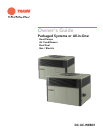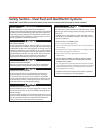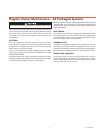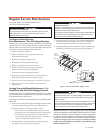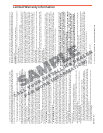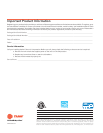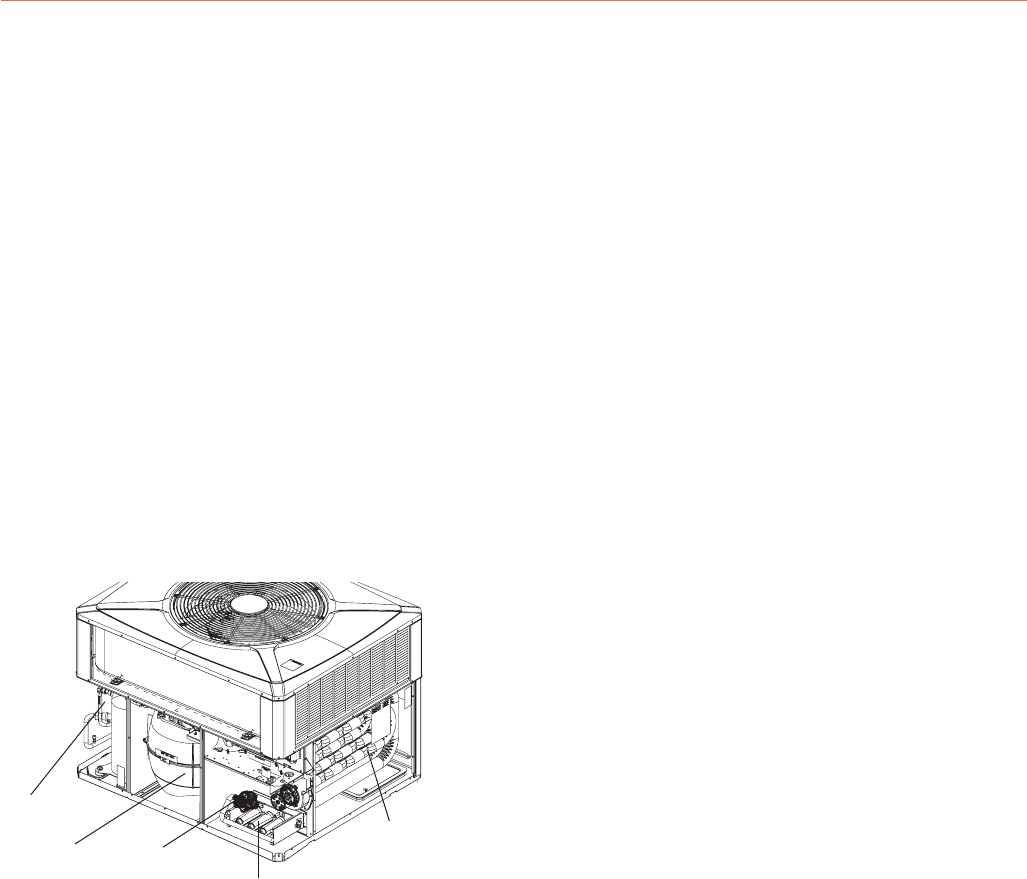
3 DC-UC-WEB01
General Information
Understand the signal words DANGER, WARNING, and
CAUTION. These words are safety alert words. DANGER
indicates the most serious hazards which will result in severe
personal injury or death. WARNING indicates hazards which
could result in personal injury or death. CAUTION is used to
indicate unsafe practices which could result in minor injury or
property damage.
Overview
Your combination dual fuel heating/electric cooling unit is
designed to provide comfort all year long with safe, efficient,
trouble-free operation. It is important that you understand how
to operate and maintain your unit to keep it operating safely
and efficiently. This guide will acquaint you with these important
procedures. Familiarize yourself with this manual and store it in
a convenient location for future reference.
Any additions, changes, or conversions required in order for
the unit to satisfactorily meet the application needs, should
be made by a qualified product distributor or local dealer,
using factory specified and approved parts. See Figure 1 for
component layout.
When AUTO is selected, the fan will only operate as required
during the heating or cooling cycles. The fan mode can be
used to operate the indoor fan continuously by selecting ON.
Continuous fan mode during cooling operation may not be
appropriate in humid climates. If the indoor air exceeds 60%
relative humidity or simply feels uncomfortably humid, it is
recommended that the fan only be used in the AUTO mode.
To ensure that the thermostat operates properly, it must be
level and positioned to avoid the influence of such external
heat sources as lamps, televisions or other heat-producing
appliances.
Remember these instructions at all times:
• Neverperformanymaintenanceproceduresuntil
theelectricalpowertotheunitisturnedoff.
• Neverperformanymaintenanceproceduresuntilthe
gasvalveinthegassupplylineisturnedoff.
• Neverremoveanypanelfromtheunitwhileitisoperating.
• Neverremovepanelsorpartsfromtheunitthat
arenotdiscussedinthisguide.
• Nevercovertheunitsinceitisdesignedtooperate
yearround.
• Neverstoreanythingammableorcombustible
aroundorneartheunit.
Your unit is of complex design. To ensure that it performs safely
and gives long-lasting service, some of the maintenance work
must be performed by a qualified service technician.
When a service technician is referred to in this manual, it is
describing a service technician that has had special training
or a number of years experience in servicing this type of
equipment. It is your responsibility to select a qualified service
company that can provide a service technician of this caliber.
Two Stage Cooling Models – For units with the feature of two
staged cooling, the thermostat will determine whether to run
the system at the full capacity or a lower capacity. This depends
on the daily cooling load of the conditioned space. The system is
more efficient when running at low capacity (1st stage). At lower
outdoor temperatures 1st stage will be sufficient to maintain
indoor comfort.
With the thermostat set to COOL, the system will automatically
cycle on and off as well as from low (1st stage) to high (2nd
stage) as needed to maintain the thermostat set point for indoor
comfort. During 1st stage operation the compressor, as well
as the indoor fan, will run at a reduced speed. This produces a
reduced capacity which is more efficient than the high capacity
2nd stage. If the low capacity (1st stage) is not sufficient to
maintain the thermostat setting, the system will switch to high
speed (2nd stage). As the thermostat temperature setting is
reached, the system will cycle to low speed then off.
Figure 1. Component Layout
Compressor
Indoor
Blower
Motor
GasValve
Heat
Exchangers
Burners
Note:Dependingonfurnacesize,
yourunitmayhave1,2,or3burners.
Thermostat
Room thermostats are delicate temperature-sensing controls.
Their main function is to energize and de-energize the heating
or cooling circuit to maintain the temperature setting you select.
Many thermostats contain a room thermometer to indicate the
approximate room temperature, and a temperature scale to
select the desired indoor air temperature. In addition, most
thermostats have modes of HEAT, OFF and COOL, and fan
modes of ON and AUTO.
When OFF is selected your unit will not operate in either
heat or cool modes. If HEAT or COOL is selected, the unit
will automatically cycle on and off to maintain the desired
temperature settings.
Safety Section – Dual Fuel and Gas/Electric Systems



